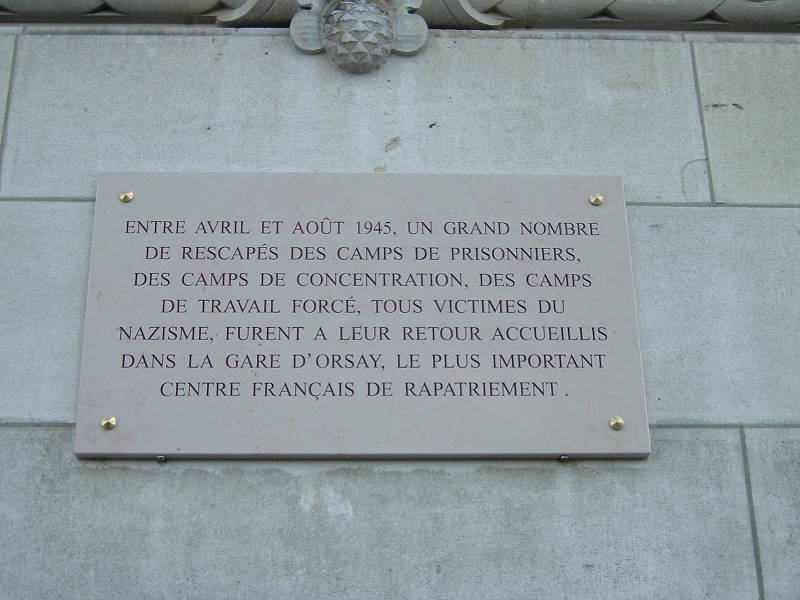
French World War II Memorials
French Memorials
France lost a lot of people during World War II.
The French Ministry of Defense puts French military war dead
at 180,000, counting just the conventional military from
Metropolitan France plus the colonies.
Another 20,000 died fighting in the
French Resistance.
Civilian deaths totaled an estimated 390,000,
including 30,000 murdered by the occupying German forces
or the collaborationist Vichy regime.
Cities and towns of all sizes commemorate the war dead,
with a town square named for the day of the end of the war,
the day of the Normandy landings, local heroes,
or Allied figures like Franklin Roosevelt.
Let's see some of the common small memorials you find
throughout France.
Paris
Here is a memorial at a school:
Jean Roger DEBRAIS
learned the love of his country.
Young F.T.P.F.
He died for her
14 December 1943
under the bullets of the enemy.
He was 20 years old.
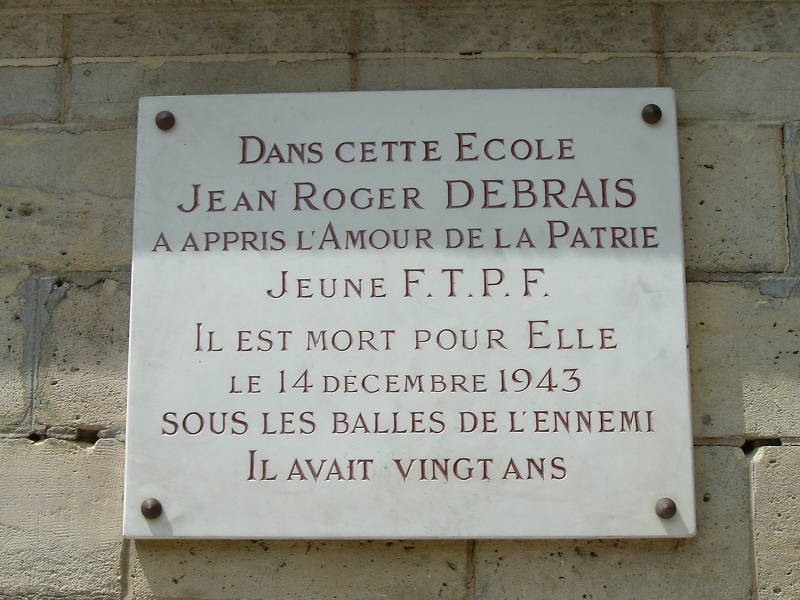
F.T.P.F. stands for Francs-Tireurs et Partisans Français, an armed resistance organization created by leaders of the French Communist Party.
Here we see what was formerly l'École Communale de Garçons in the 12th Arrondissement of Paris. It's still a public school, just not exclusively for boys these days. It's along Avenue Daumesnil facing the Promenade Plantée, near Gare de Lyon.
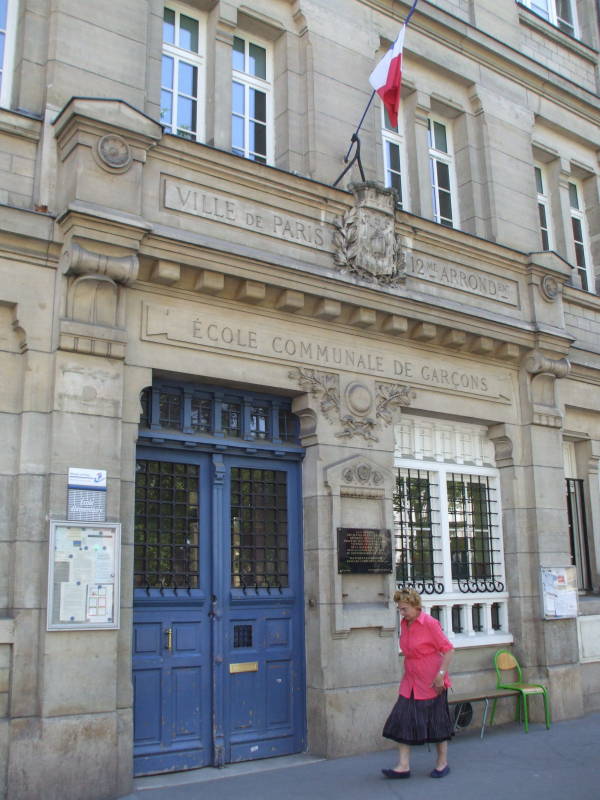
The case to the left of the door has the week's menu posted, as required by law. French national law also requires that school meals provide good nutrition and education.
To the right of the door there's a commemorative plaque. Unfortunately, there are many plaques like this at schools in Paris.
To the memory
of the students of this school
deported from 1942 to 1944
because they were Jews,
innocent victims
of the Nazi barbarity
with the active involvement
of the Vichy government.
They were killed
in the death camps.
29 March 2003
We will never forget
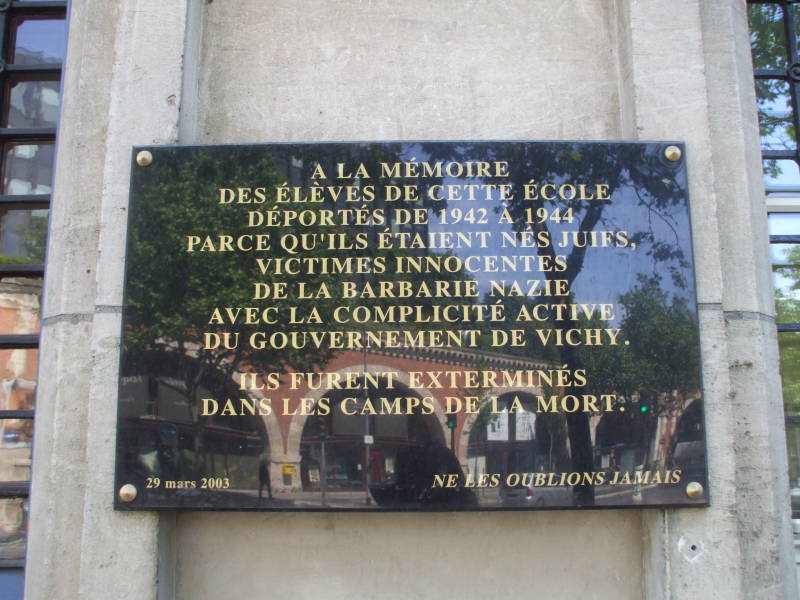
Let's visit another school. This one is in the 18th Arrondissement, going up the hill from the Pigalle Métro station toward Montmartre.
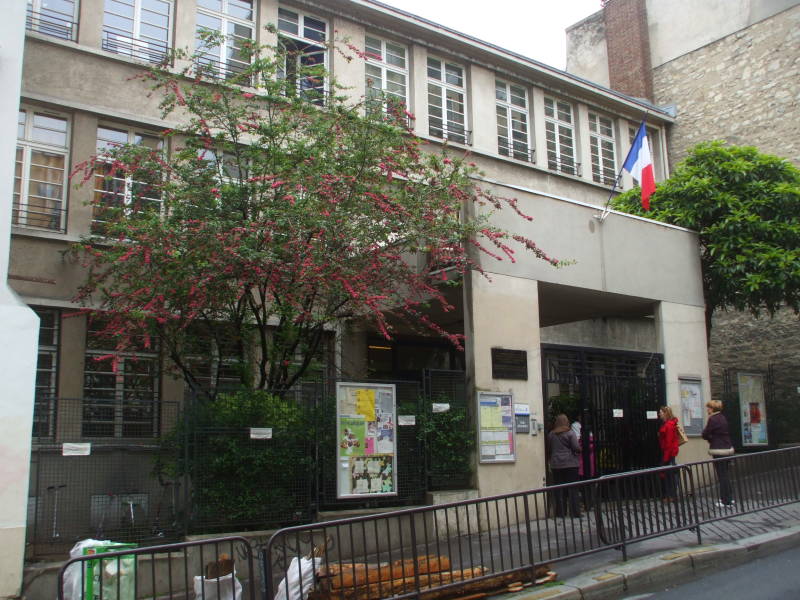
Over 700 children from the 18th Arrondissement alone were killed in the German death camps. That detail is added on this plaque.
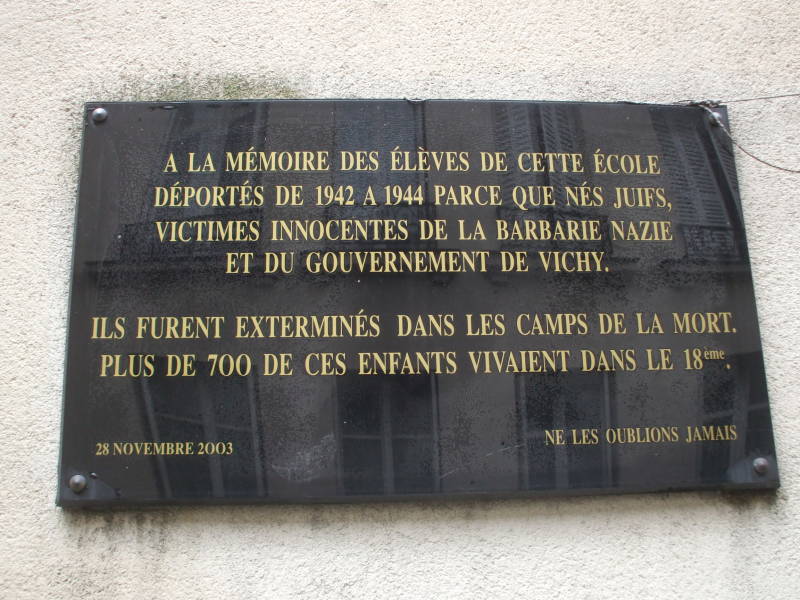
And, a similar sign at yet another school in Paris:
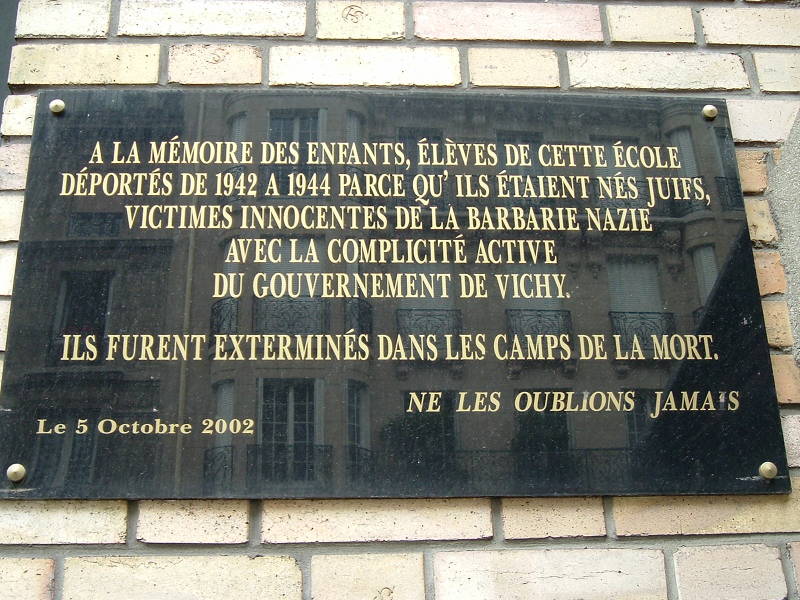
Here's a pair of plaques in the Latin Quarter.
Robert Gauthier
student
involved in the F.F.I.,
fell gloriously
for the liberation of Paris
on 21 August 1944
at the age of 21 years.
F.F.I. refers to the Forces Françaises de l'Intérieur. Charles de Gaulle used the name as a general term for the various groups of resistance fighters. As France became progressively liberated after the Allied landings at Normandy on 6 June 1944, and in southern France on 15 August, F.F.I. personnel were more formally organized into light infantry units, and eventually integrated into the regular Free French forces.
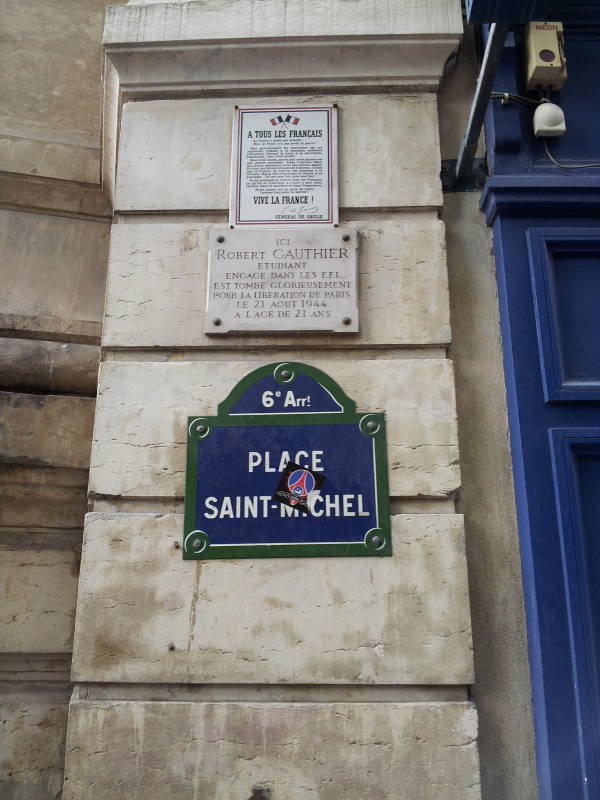

Let's take a closer look. The top piece is a reproduction of pamphlets and posters created during the war and distributed and posted, at great risk to the people doing it.
It reproduces General Charles de Gaulle's address to the French people over BBC radio on the night of 18 June 1940, urging them to fight the Nazis.
Alexandre ROCHAIS
born on 3 August 1886
a fighter of the 6th section of ARAC,
arrested 9 June 1943,
assassinated 18 September 1943
at Buchenwald
The ARAC is L’Association Républicaine des Anciens Combattants, an association of military veterans founded in November 1917.
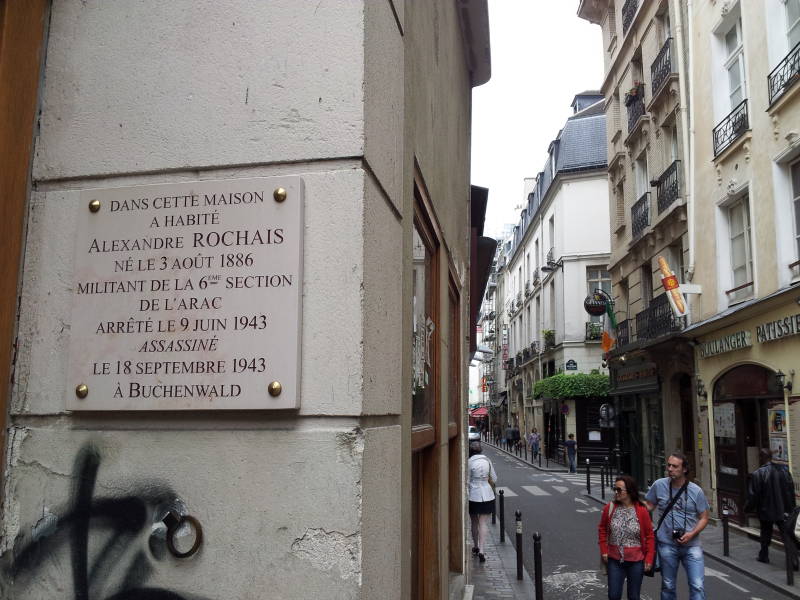
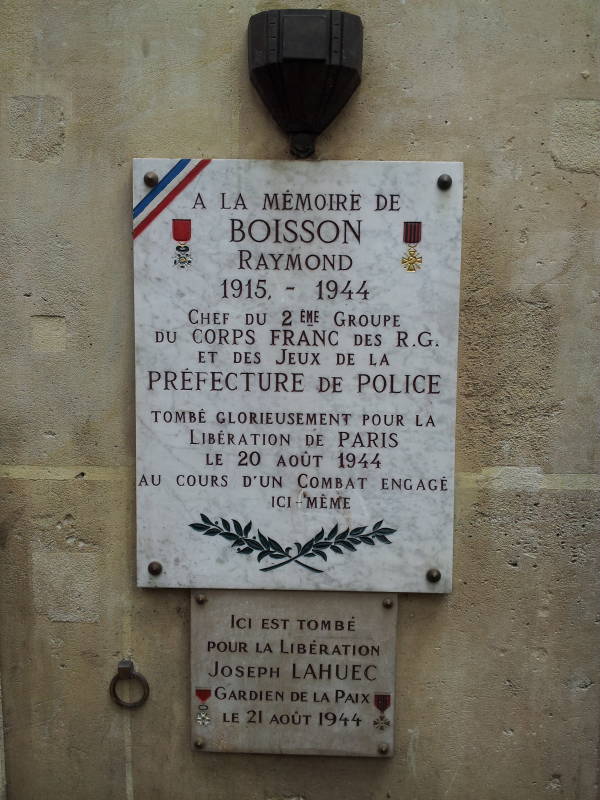
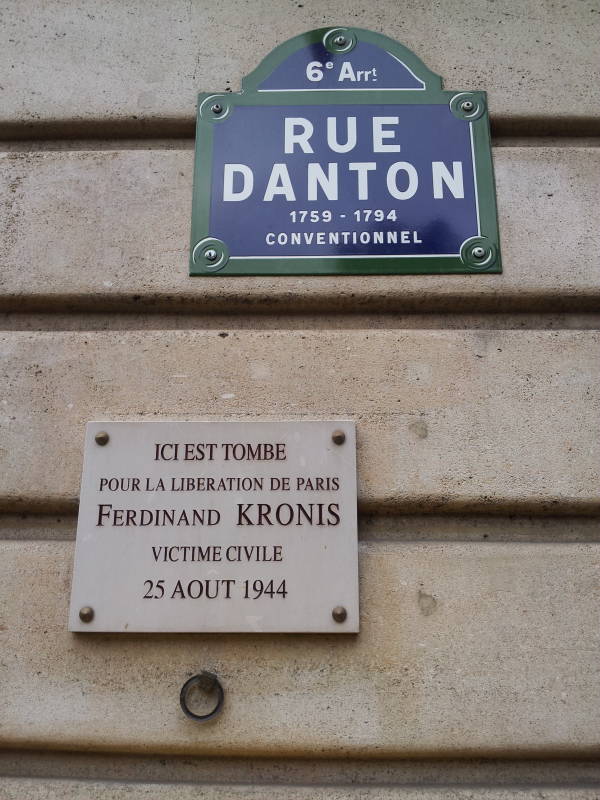
A Yugoslav patriot fell under the German bullets.
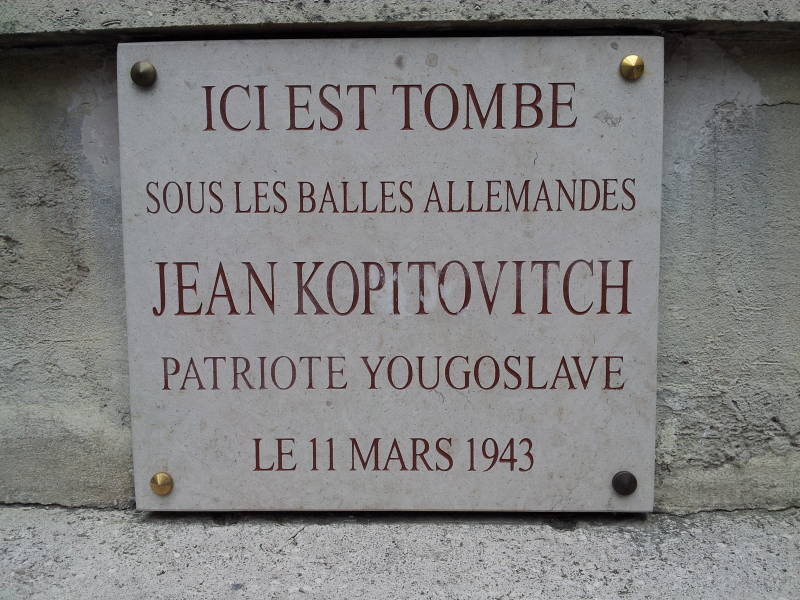
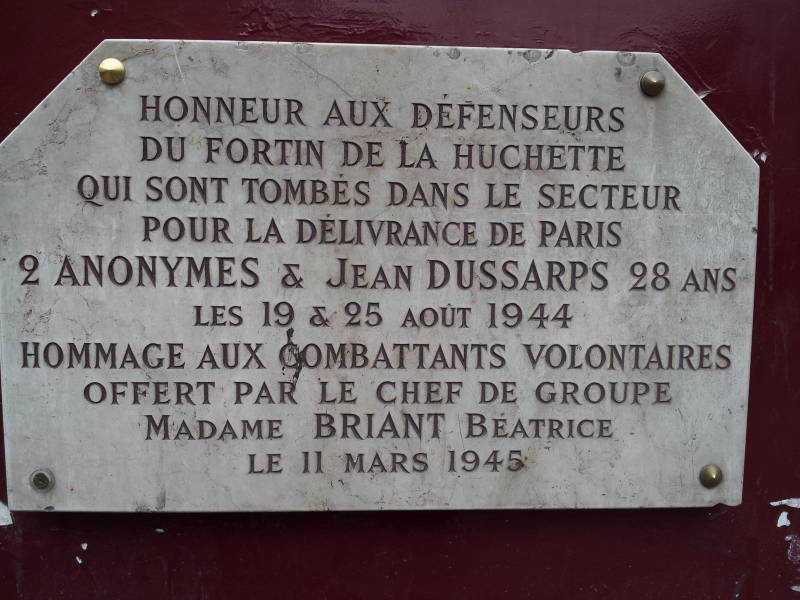
Here we're walking along the Seine, looking across to Nôtre Dame de Paris on the narrow Île de la Cité in the center of the river.
Here's a memorial to 10 fighters who were manning the barricades during the battle to liberate Paris in August 1944.
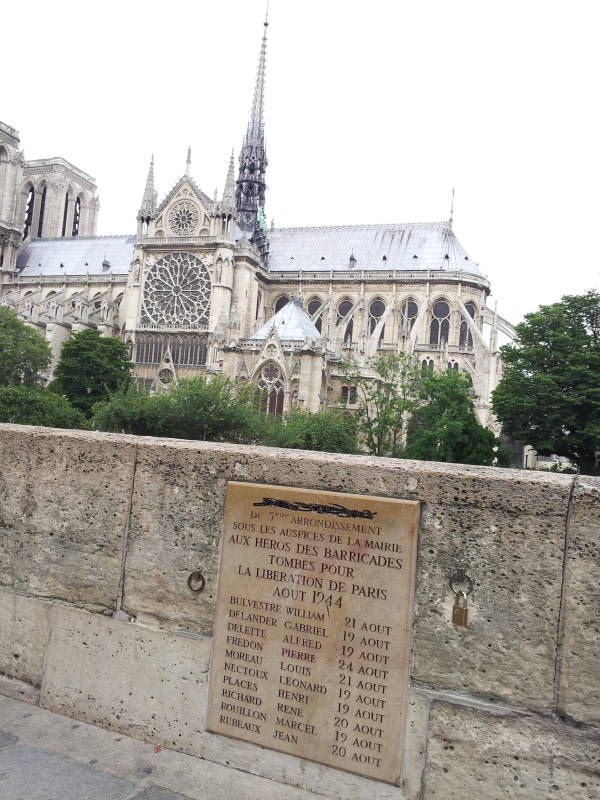
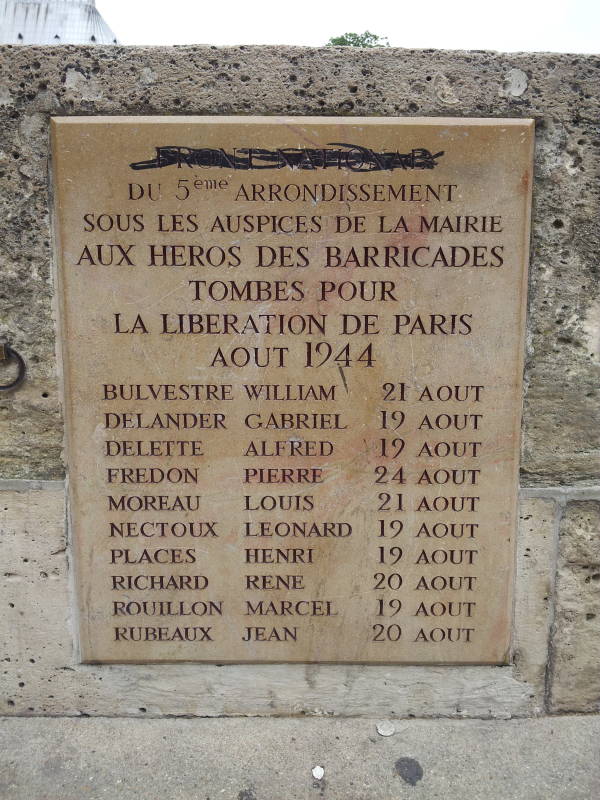
The plaque has been defaced, with "Front National" marked over. Here's why:
During World War II, the Front National was a resistance organization. But starting in 1972, an extremist right-wing political party used the name. These days the name is strongly associated with the much more recent use by the extremist party.
The original Front National or the Front National de l'indépendence de la France was a far-left French Resistance movement created in 1941 by two members of the French Communist Party. They named it that after the Front Populaire, an alliance of left-wing groups which governed France from 1936 to 1938. The FN created and distributed propaganda, fabricated false identity documents, provided logistical support to clandestine operations, and sabotaged German and Vichy facilities and operations.
A totally different group calling itself the Front National formed in 1972. It has been a far-right group, focused on xenophobia, increased imprisonment, and right-wing populism. Its long-time leader, Jean-Marie Le Pen, the leader of the party from its founding until he resigned in 2011, has said that the Nazi occupation of France was "not particularly inhumane."
The name "Front National" wasn't trademarked, so the satirical magazine Charlie Hebdo claimed the trademark in early 1999, giving the original Resistance movement sole use of the name.
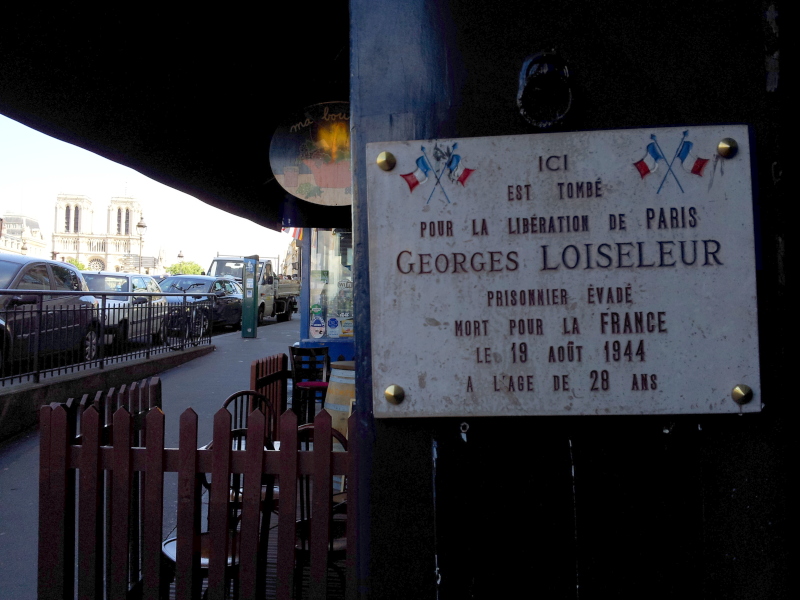
Above, we have continued further west, and turned to look back toward Nôtre Dame. And here is another marker of where another Resistance fighter fell. He had been captured by the Germans, and escaped. Then he died here, for France.

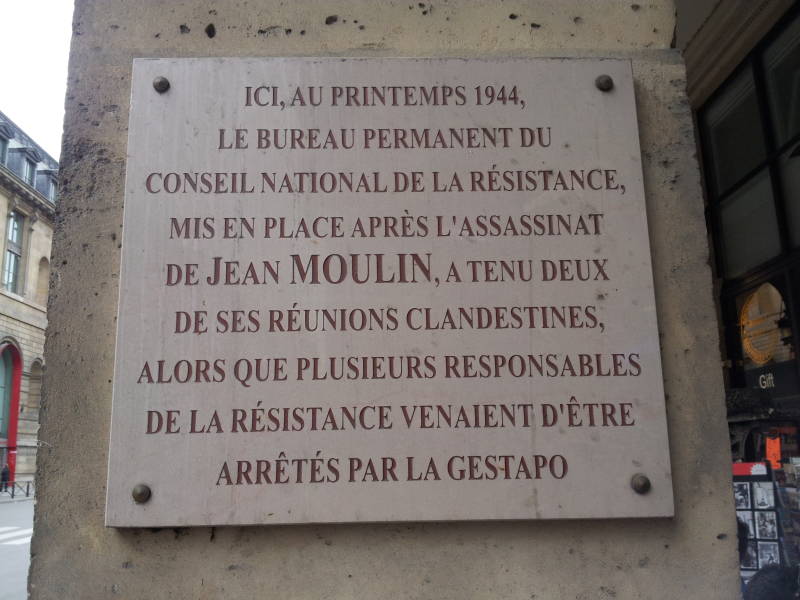
the Marais
The Marais district in the 3rd and 4th arrondissements became an aristocratic area in the Middle Ages. The nobility continued building homes here in the 1600s and into the 1700s. But then the area went downhill after the French Revolution.
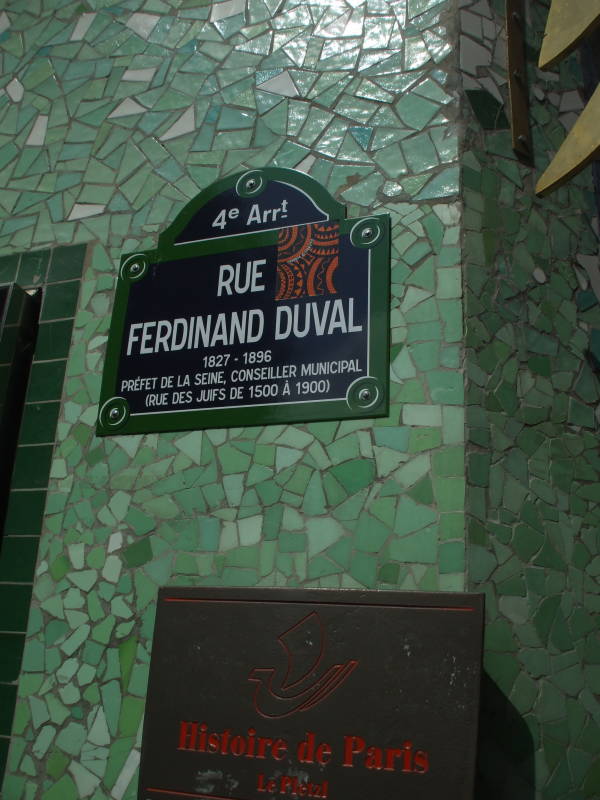
The Pletzl, Yiddish for "little place", sprang up when Jewish immigrants came to Paris in the late 19th and early 20th centuries. The Marais had been just outside the city walls when Paris expelled the Jews around 1400. It had been the Jewish district since then. The new immigrants from eastern Europe moved in and the neighborhood's Jewish population grew. There are now three synagoges, at 17 rue des Rosiers, at 25 rue des Rosiers and at 10 rue Pavée.
The plaque at the corner of the Rue des Rosiers and the Rue Ferdinand Duval says:
Fleeing persecution, Ashkenazi Jews flooded into Paris beginning in 1881. They found places living among their co-religionists already established in the Marais. By 1900, around 6,000 had arrived from Rumania, Russia and Austria-Hungary; 18,000 more arrived in the years preceding the First World War. Installed in considerable numbers in the Rue des Écouffes, the Rue Ferdinand Duval (named Rue des Juifs, "Jews Street", until about 1900), and the Rue des Rosiers, they constituted a new community, the "Pletzl", the "little place" in Yiddish, and they created the École Israelite du Travail (Israelite Trade School) at 4B, Rue des Rosiers.
The life of this community was evoked in the Roger Ikor novel, Les Eaux Mêlées ("Agitated Waters"). More than half of them perished in the Nazi concentration camps.
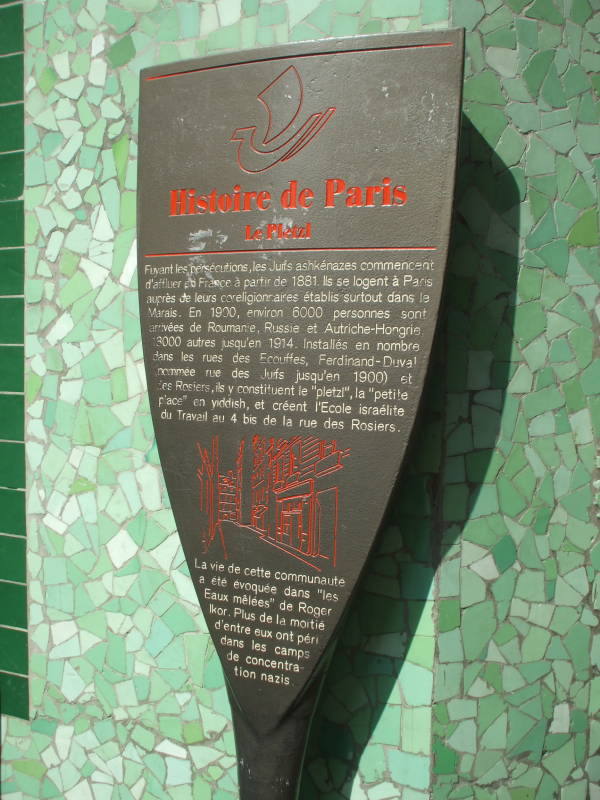
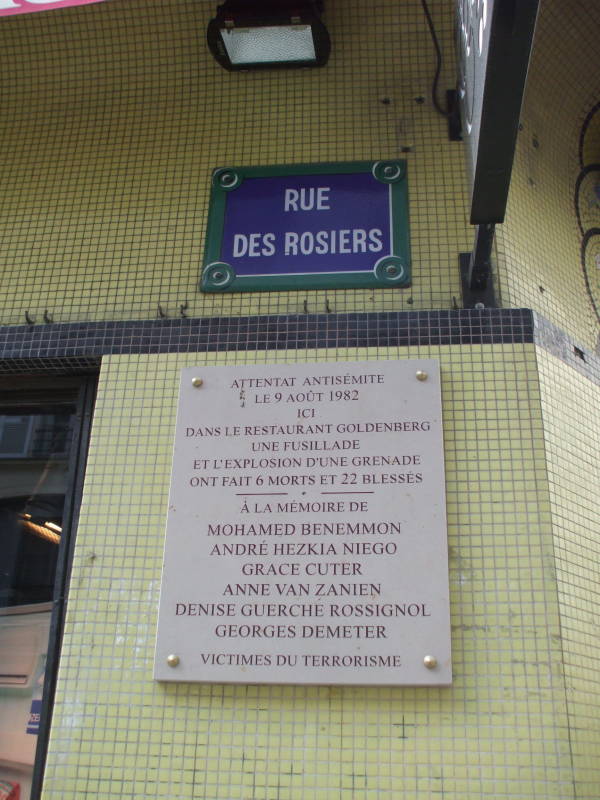
The above marker is about much more recent anti-semitism. On 9 August 1982, here in Chez Jo Goldenberg, a Jewish restaurant, Palestinian terrorists set off a grenade that killed the listed six people and injured twenty-two more. Evidence ties the event to the Abu Nidal Organization.
An estimated 75,000 to 77,000 Jewish citizens of France were killed during World War II, either killed where they lived, or transported east to the death camps. Three synagogues remain in the Pletzl in the Marais.
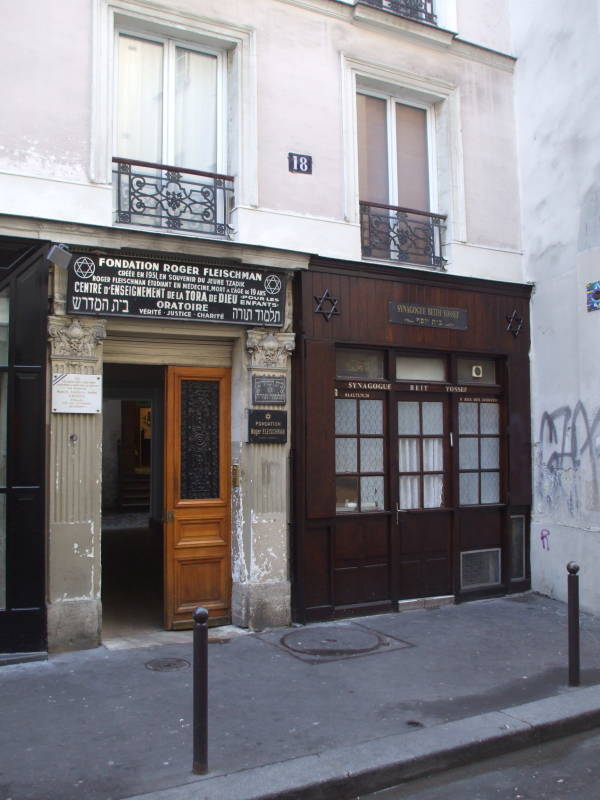
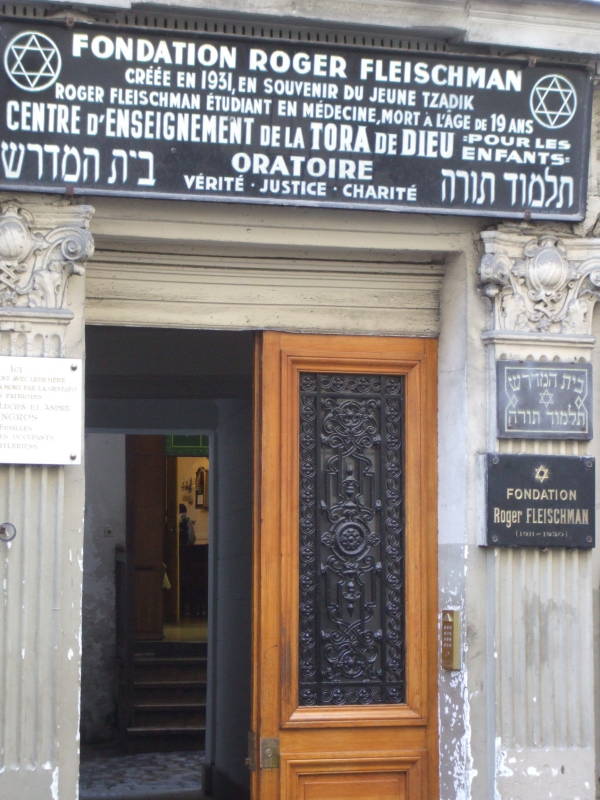
Yvette Feuillet, assassinated by the Nazis at Auschwitz.

Three young men living here in the Marais with their mother were tortured to death by the Gestapo.
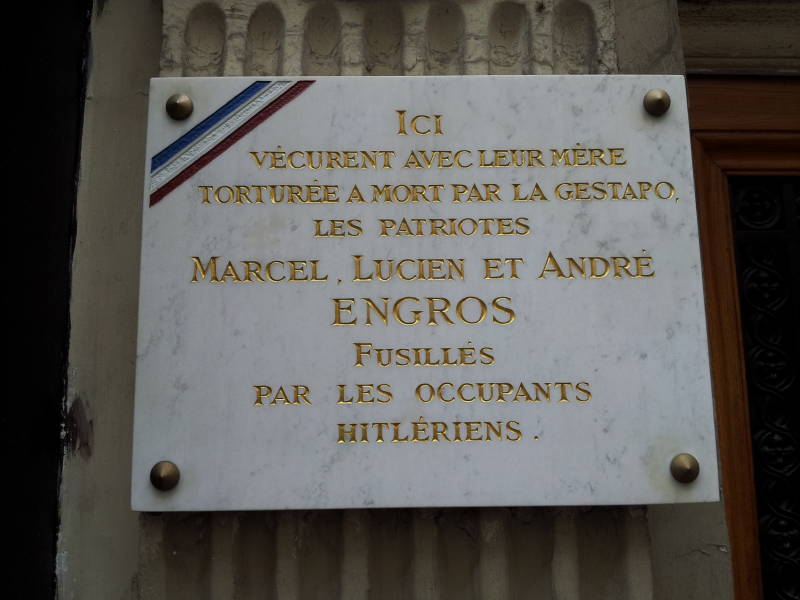
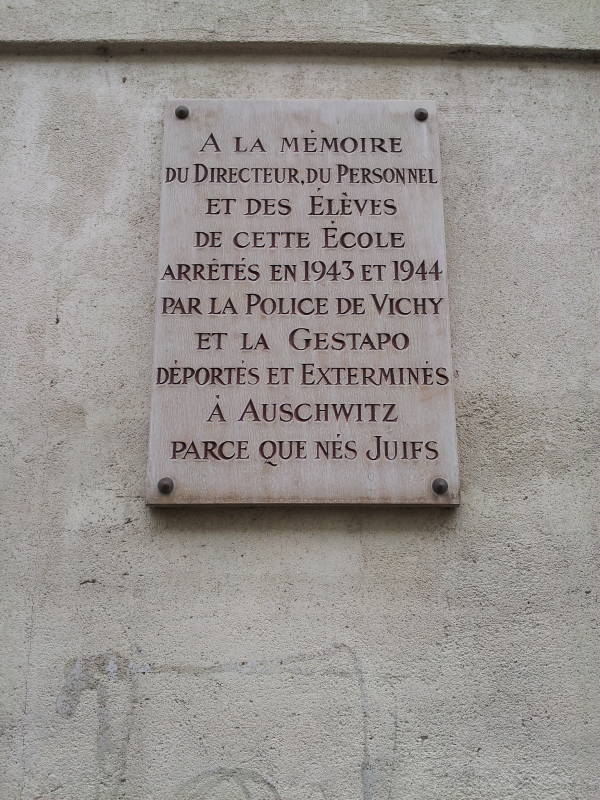
And above, one more school sign. This one is in the Marais, and it's older than the black granite ones placed more recently. The school superintendent, the staff, and students were arrested by the Vichy police and the Gestapo. "They were deported and exterminated at Auschwitz because they were Jews."
MétropolitainThis plaque down in the subway, the Métropolitain de Paris, commemorates the actions of 3000 of their employees during the battle to liberate Paris.

Now let's leave Paris.
Chartres
A small square in Chartres is named for Jean Moulin, founder of the National Coucil of Resistance.
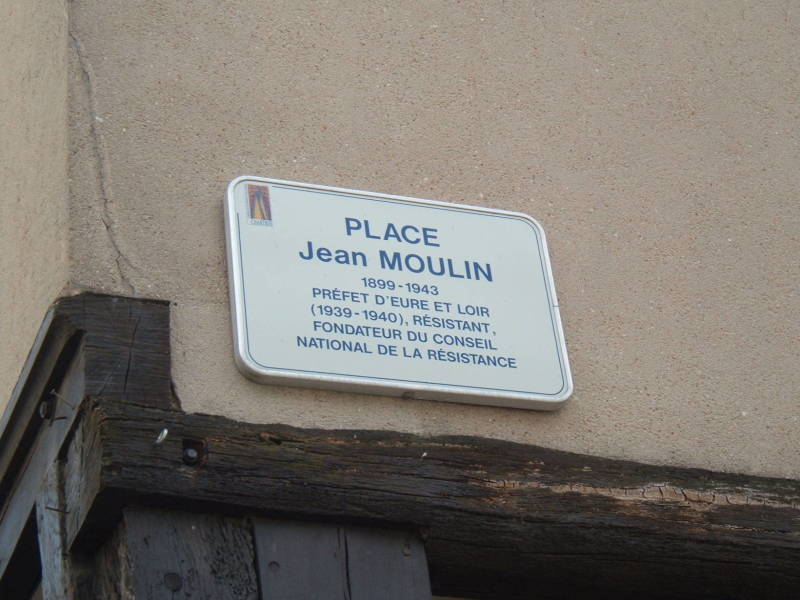
Arles
The mayor and general counsel of Arles was arrested by the Gestapo and taken to Germany, never to return.
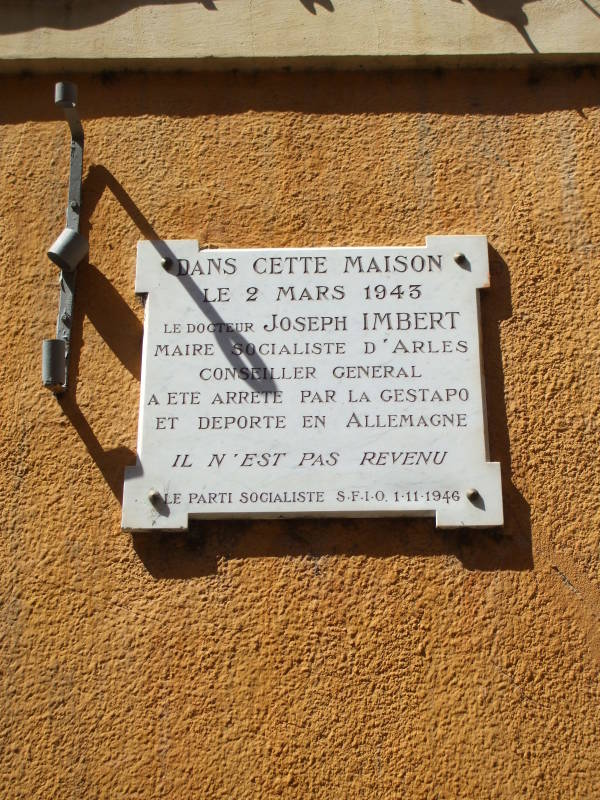
Capestang
Capestang, a town of about 3,000 people along the Canal du Midi, has a memorial plaque along its central avenue.
In this place on 9 June 1944, 179 men aged 18 to 40 were rounded up and transferred to Germany by the SS who had already taken reprisals against the village, having already shot Pierre Marty near the low road to Poilhes.
Among them, Joseph Leibowitz did not return.
On the 6th, a convoy of resistants from the Polhes-Capestang sector had been intercepted at Fontjun (5 killed, 5 wounded on the French side).
On the 7th, 18 patriots were arrested, interrogated, tortured, and then shot on the Champ de Mars at Beziers.
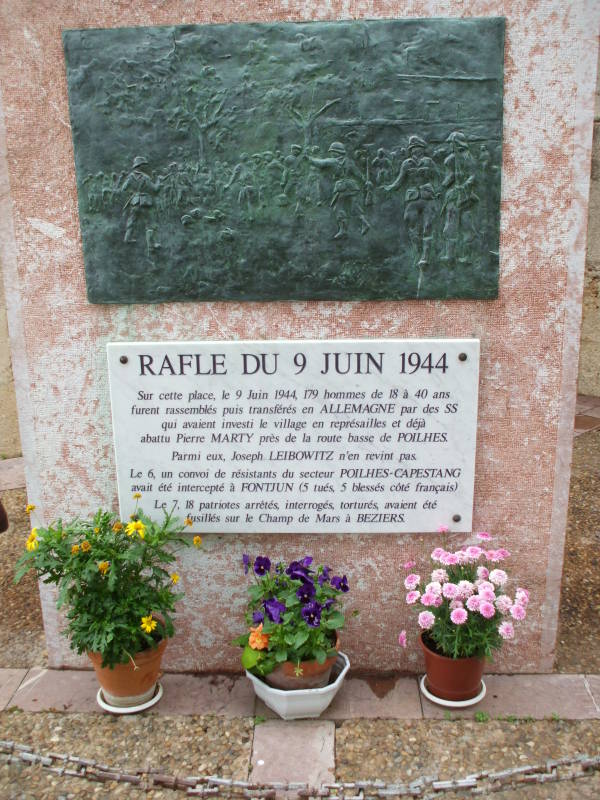
Columbiers
Columbiers, a small town along the Canal du Midi, named its main square after the day the war ended.
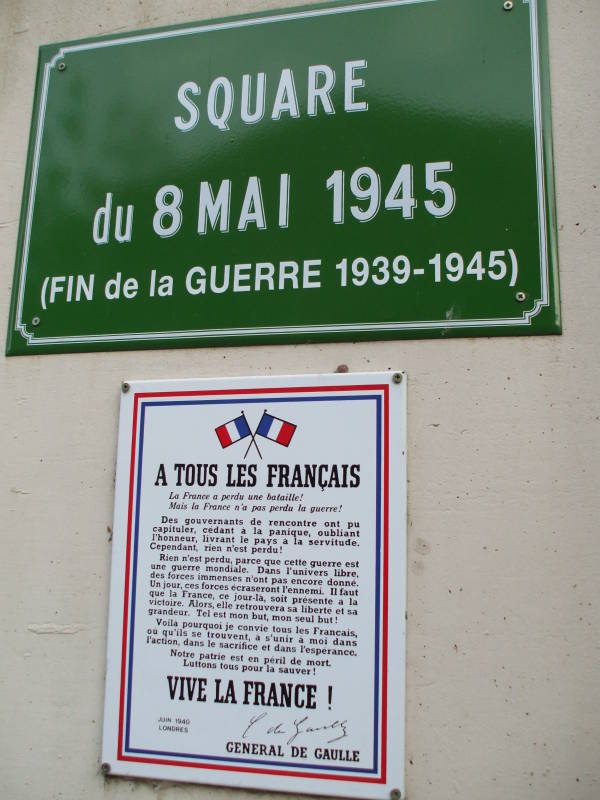
Saumur
——
IN MEMORY
of the Resisters and the Hostages of Saumur
victims of the Nazi barbarism
Who died or have suffered
FOR FRANCE
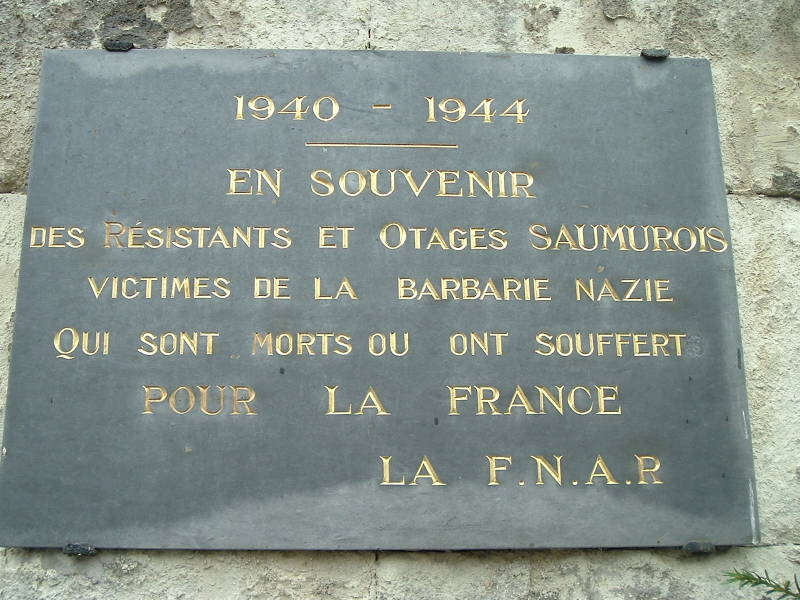
Saumur Saumur
megaliths
A large cavalry school was established in Saumur before the revolution. The invading German forces arrived in 1940. A group of 786 cadets from the cavalry school, together with students from a non-commissioned officers' school and a company of North African infantry, about 2,300 men in total, fought to defend Saumur's bridge across the Loire river against the advancing German cavalry division. With no armor or air support, they managed to resist a militarily superior force for 36 hours.
Montreiul-Bellay
Montreiul-BellayMontreiul-Bellay is a small town near Saumur. Normans established a settlement here in the early 1000s.

Marseille
MarseilleSome of the memorials in Marseille show the breadth of the French Empire. This first memorial in Marseille lists Algerian troops "with their brothers in arms" of the F.F.I.
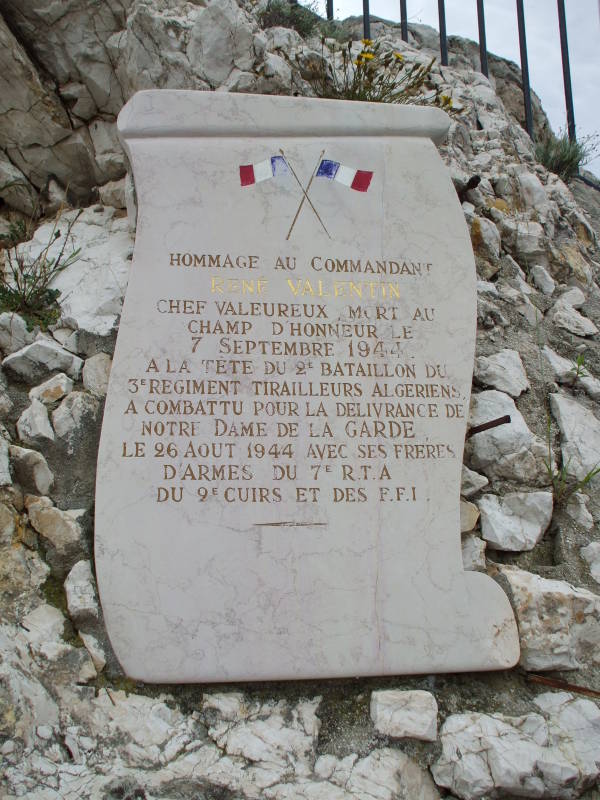

The last one above lists Marseillais volunteers of the African Commandos.
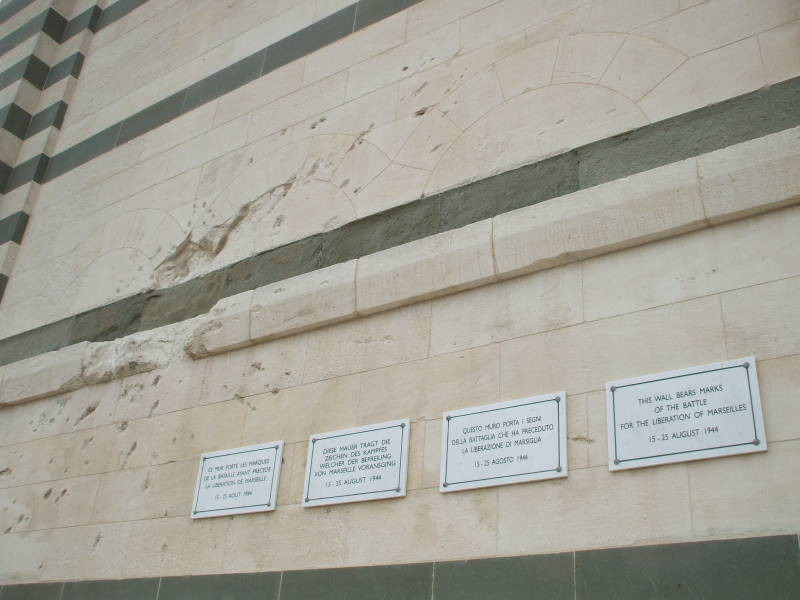
At the End of the War
This plaque is on the Musée d'Orsay, which now is a prominent art museum.
However, it was built as Gare d'Orsay, a railway station. It was converted into an art museum in the 1980s.
